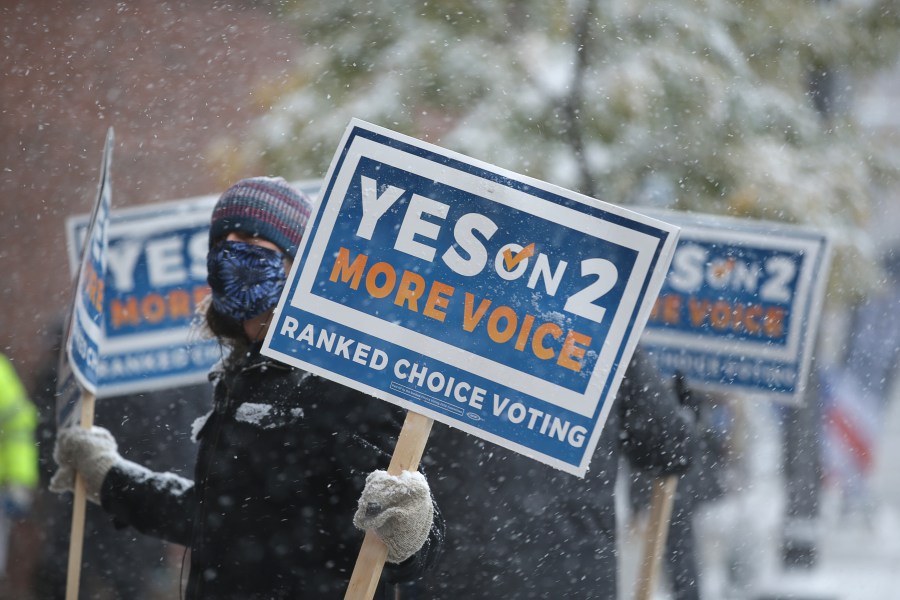(NewsNation) — Ranked choice voting (RCV) refers to an election system where voters rank candidates on a ballot in order from most preferred to least, instead of choosing only one.
While RCV is a common practice globally, it is less utilized in the United States. However, numerous jurisdictions across America have adopted the practice and voters in several states will decide whether to adopt the method in November.
What is ranked choice voting?
Ranked choice voting, also known as instant runoff voting, allows voters to rank candidates in order of preference. Instead of making one selection, voters can list candidates from most to least favored.
That means if your first choice doesn’t win, your ballot could still make a difference based on your second choice.
Proponents say the system is more representative of what voters actually want and reduces problems like “spoiler” candidates who may be afraid of competing out of fear that they might split the vote.
For instance, let’s say there’s a mayoral election where a candidate earns less than 50% of the first-choice vote. Under a ranked-choice system, the candidate with the fewest first-choice votes would be eliminated and voters who ranked that candidate as their first choice would have their votes count for their next choice. That process continues until someone emerges with a majority.
If a candidate receives a majority of the first-place votes in the first round, then they win, and the race is over.
Ranked choice voting is different from “plurality voting,” in which the candidate who gets the most votes wins, even if they didn’t receive a majority.
With plurality voting, “you can have somebody who wins with 30-40% of the vote, and in that case, that means the majority of the voters preferred somebody other than the person who won,” said Kirby.
Ranked choice voting could also increase positive campaigning since candidates are incentivized to earn second or third-choice support, Kirby pointed out.
Ranked choice voting pros and cons
Proponents of ranked-choice voting believe it makes elections fairer and more representative of constituents’ thoughts. Advocates believe ranked-choice voting can be used to determine the candidate with the strongest support across an entire electorate.
Common criticisms of this system include that it is incongruent with the “one person, one vote” mantra and that candidates with the most first-choice votes can lose.
Changing the longstanding voting practices across the U.S. not only could create complications for voters adjusting to a new practice but there are likely to be high costs initially.
According to research from Kennesaw State University, the Georgia Senate runoff election in 2020 cost the state $75 million.
Where is ranked choice voting used?

Alaska and Maine are the only states using RCV in the 2024 presidential election. There are eight candidates on Alaskans’ presidential ballot, allowing voters to rank them 1-8. Voters do not have to use all eight votes.
By comparison, Maine voters will have five candidates and a write-in spot.
According to RCV Resource Center’s March report, the voting system is operational in California, Maryland, Massachusettes, Minnesota, New Mexico, New York, Oregon, Utah, and Virginia, in various capacities.
Some Alaskans are in favor of repealing ranked choice voting, arguing it is confusing and rewards candidates who would otherwise not receive support.
What countries use ranked voting?

Australia adopted the practice before any other country in the world. It is used in electing politicians to the Senate, and House of Representatives at a federal level. On the state level, it is used for assembly elections.
The Republic of Ireland and Malta have used RCV since 1921 and currently have the system for parliament, local government, and EU parliament elections. In addition, the Republic also has RCV for presidential elections.
Northern Ireland uses ranked voting for local elections, the EU parliament, and the national assembly. Papua New Guinea has RCV for parliament, while Scotland employs it for local council elections.
NewsNation’s Andrew Dorn contributed to this article.





